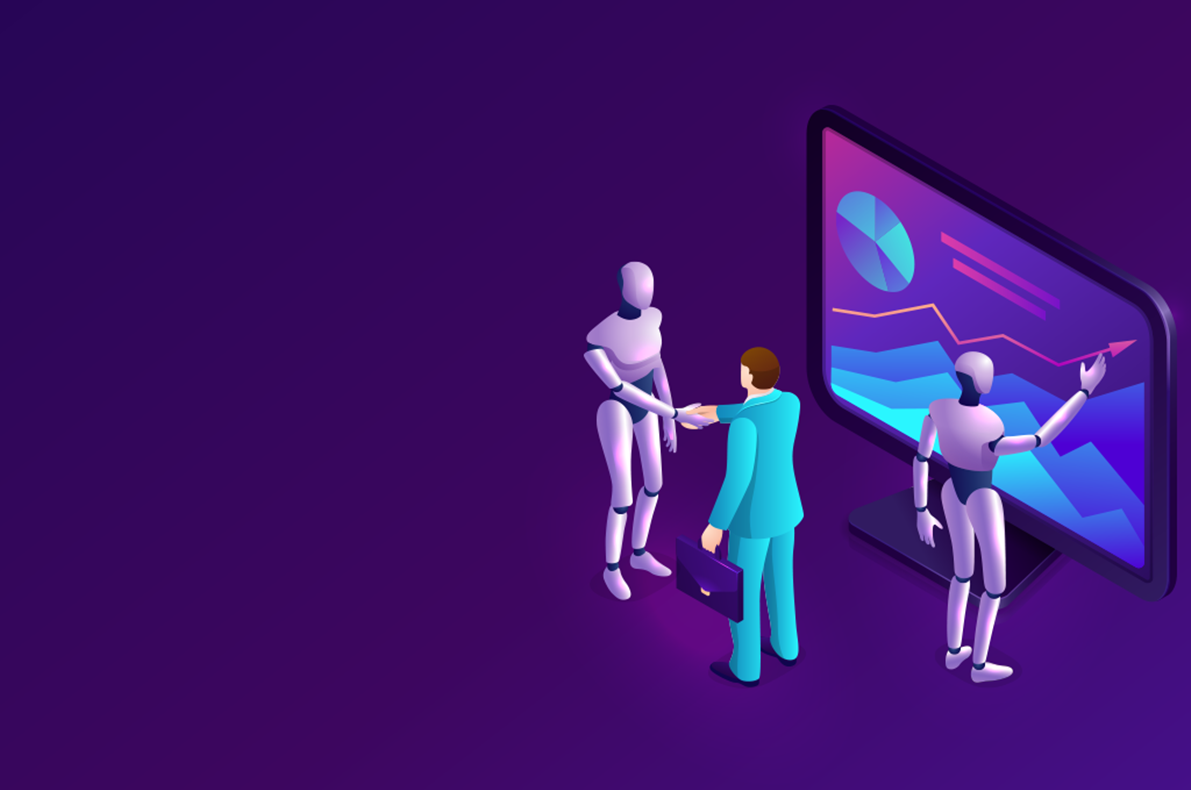As the business world continues evolving rapidly, HR departments face mounting pressure to adapt. Meeting rising expectations for exceptional candidate and employee experiences demands tools and processes that can keep pace. This is where efforts to automate HR functions become critical.
Implementing automation allows HR department to streamline repetitive tasks, reduce errors, improve data accuracy, and free up time for more strategic initiatives. Whether it's boosting productivity, enhancing communication, or making better data-driven decisions, automating workflows for HR department helps in operating at peak efficiency.
Let us explore some of the key ways HR automation software can transform department functionality.
What is Human Resource Workflow Automation?
A human resource workflow refers to the procedures and sequential steps that HR teams take to complete common talent management tasks within an organization. These workflows map out the process of recruiting applicants, onboarding new hires, tracking employee performance, approving time off requests, and conducting various other administrative HR activities.
By systematizing and streamlining repetitive workflows, HR staff can optimize their routine responsibilities and reduce the amount of manual work needed to get things done. Automating workflows for scheduling interviews, gathering feedback, updating employee records, and sending notifications can save tremendous time and effort.
With more efficient workflows powered by automation, HR professionals can devote their attention to other talent initiatives and strategic priorities rather than getting bogged down in routine admin work. Optimized workflows translate to higher productivity, along with the capacity to deliver enhanced employee experiences.
Automated workflows standardize processes for:
Automated workflows help standardize and streamline common HR processes. This allows for faster completion of high-volume tasks like new hire onboarding, policy management, time tracking, and handling employee changes.
- New employee onboarding - Automatically send welcome emails, training materials, equipment requests and circulate new hire data to payroll and benefits systems.
- Policy acknowledgements - Route forms to collect digital signatures. Automatically log once they are signed off.
- Time tracking and leave requests - Employees can easily submit requests which route to managers for quick approvals. The system logs details and makes any necessary payroll adjustments.
By reducing the amount of time HR teams spend on mundane administration, workflow automation gives them capacity to focus on high-value activities and strategy.
Boost Productivity Across Multiple Departments
HR rarely works in isolation. There is frequent cross-collaboration with teams like IT, Finance, Facilities and more. However, relying on emails and spreadsheets to manage these interactions can slow things down drastically. Hundreds of unstructured messages get sent back and forth before the right information lands with the right person.
Workflow automation tools impose consistency and structure on interdepartmental processes through features like:
- Conditional logic - Route requests seamlessly to correct approvers based on parameters set by HR.
- Notifications and reminders - Ensure follow-ups happen without having to remember and chase people.
- Process transparency - All stakeholders can check statuses and track each step.
With automated hand-offs between departments, HR processes like new starter equipment requests, employee transfers and termination checklists become much smoother. Tasks do not slip through the cracks, so employees get what they need faster.
Make Smarter Data-Driven Decisions

There are no denying HR deals with a lot of sensitive employee data. Large amounts of information pass through the department daily. Without the proper tools to collect, organize and analyze it all, deriving meaningful insights can be difficult.
This is where the data management and reporting capabilities of HR workflow software make a major difference. Features like:
- Custom fields - Capture relevant structured data from workflows, forms, and portals.
- Dashboards - Easy to use dashboards provide full transparency of the process make it easier for the HR department and stakeholders to find bottlenecks.
Rather than sifting through spreadsheets, automated analytics give HR managers an accurate bird’s eye view of their workforce. Having access to timely data and insights enables the team to measure progress towards goals, identify issues early and make better strategic decisions.
Easily Configure Workflows to Meet Changing Needs

Change is inevitable within any organization. As needs shift and new processes emerge, HR teams should not be stuck trying to make outdated methods work. The right workflow automation software allows non-technical users to easily build and modify workflows themselves to keep up with business evolution.
With a user-friendly visual intuitive interface, anyone can:
- Add and rearrange workflow steps
- Set conditional logic to route tasks
- Choose approvers
- Configure notifications
- Add custom fields and forms
As organizational priorities develop over time, HR staff do not have to rely on packed IT schedules to use any workflow or customize it.
Summarizing The Transformative Power of HR Workflow Automation
The responsibilities of HR teams will only intensify moving forward. Whether it’s providing amazing candidate experiences, driving cultural initiatives, or making predictive workforce decisions, the strategies required for success are vast. Streamlining operations through automation is what gives HR professionals the much-needed capacity for higher value work.
Automating mundane tasks not only saves HR teams hours of time weekly but also boosts productivity across the wider organization. Smooth, transparent workflows enhance communication between business units leading to faster results all around.
With the user-friendly interface HR workflow automation solutions provide continuous value. Rather than just digitizing broken manual processes, they allow teams to truly transform outdated methods that hold them back. Achieving HR excellence requires tools tailored to evolving priorities. Workflow automation gives organizations this adaptive edge, enabling the agility needed to put people first in the digital age.
Some of the major benefits of workflow automation in HR include
- Reduced manual tasks and fewer errors
- Faster processes like new hire onboarding
- Smoother collaboration across departments
- Better visibility through analytics and reporting
- Higher productivity enabling more strategic work
- The flexibility to scale and adapt workflows as needed
Implementing workflow automation is a modern must-have for HR teams seeking to boost performance and deliver amazing experiences amid business acceleration.
Why to choose Titan Workspace for HR Workflow Automation?
Titan Workspace can be considered as one of the best workflow automation software to automate HR functions, and here are some of the key reasons why you might choose it:
- Pre-Built HR workflows: Titan Workspace specifically targets HR processes, offering pre-built workflows for common tasks like onboarding, leave requests, and expense reports. This can save you time and effort compared to building workflows from scratch in a general-purpose tool. Moreover, you can get these workflows customized as per to the business needs
- No-code platform: The platform boasts a no-code interface, so you don't need programming knowledge to set up automations. This can be a significant advantage for HR teams who may not have technical expertise.
- Integration with Microsoft 365: Titan Workspace integrates seamlessly with Microsoft 365 tools like SharePoint and Power Automate, which many businesses already use. This avoids the need for additional data silos and simplifies integration with existing systems.
- Improved efficiency and accuracy: Automating manual tasks can free up HR staff to focus on more strategic initiatives, while also reducing errors and improving data accuracy.
- Enhanced employee experience: Streamlined workflows can make HR processes easier and more user-friendly for employees, leading to better engagement and satisfaction.
- Cost-effectiveness: Titan Workspace is a cost-effective solution compared to other HR automation tools, particularly by eliminating the need for custom coding and additional subscriptions.
FAQ’s
- How will automation affect HR?
Automation will allow HR teams to be more efficient, accurate, and strategic by streamlining repetitive tasks. - What are the benefits of workflow automation software?
Benefits include time savings, productivity gains, error reduction, process transparency, and data-driven insights. - What are the examples of HR automation workflow?
Examples include automated onboarding, time tracking, policy acknowledgements, employee record updating, and performance review administration.




Your email address will not be published. Required fields are marked*